Every electronic component has a unique configuration of pins, also called terminals, for various purposes, including input, output, ground, power supply, and control signals.
There are two types of components, polarized and non-polarized. The polarized component’s pin configuration matters while connecting them and non-polarized components can connected in any way. In electronics, some components have many pins just like an IC, each pin defines one of the functions of the IC.
In this article, we’ll learn electronic components pic configuration.
Pin configuration of electronic components
Understanding electronic components’ pin configuration is essential for designing and troubleshooting circuits.
Every component has a unique pin configuration which defines its functionality in the circuit.
Let’s first understand what pin configuration means and why it’s important.
Pin configuration
The arrangement, designation, and functionality of the pins or terminal is refers as pin configuration.
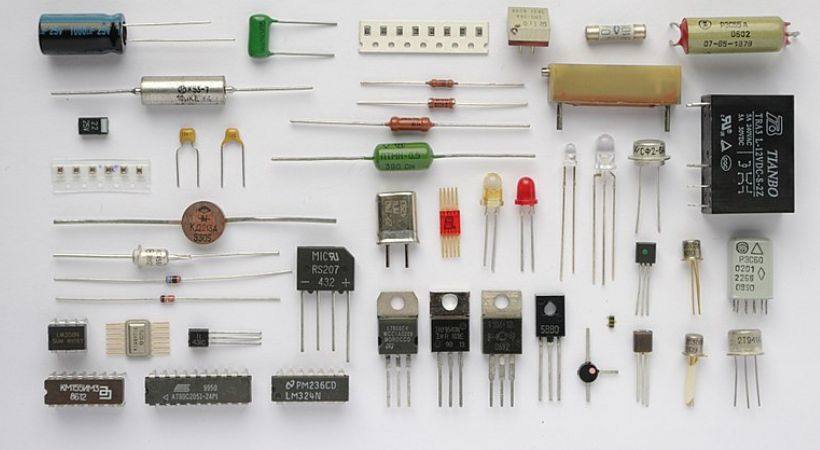
This is important as it defines how the component should be connected in an electronic circuit.
The pins can be identified by numbers and names. Sequential numbers are given to the pins and names are also given like Vcc (power supply), GND (ground), Vout (output voltage), etc.
In electronic components, each pin has a specific function, if a pin is labeled as Vcc it means the power source should be connected to it.
Pin configuration importance
In the design implementation, and troubleshooting of the electronic circuits, understanding the pin configuration of electronic components is essential.
Here are some reasons why a beginner needs to learn the pin configuration.
1. Correct connections
Components in the circuit should be connected correctly to get an indented function. If you don’t know about component pin configuration, you will make mistakes while connecting it.
So for correct connections of components, it is essential to learn about the configuration of pins and prevent damage to the circuit and other components.
2. Prevent damage
Pin misconnections can permanently harm electronic components, particularly those involving power and ground.
For instance, connecting outputs or providing power to a pin meant for ground can result in overloading or short circuits, which can cause component failure.
Understanding the pin arrangement aids in averting such incidents.
3. Help in circuit design
Engineers need to know how to connect different components effectively when designing a circuit.
The pins of the components provide the necessary information and ensure that components are connected correctly to give accurate and reliable output.
If you are working on a simple project or a complex project, an understanding of component pin configuration is needed information.
4. Troubleshooting
When the circuit performance is not as expected then learning about pin configuration will help you in troubleshooting.
You can check the pin connections and see if the applied voltage is correct or not. This method of troubleshooting is very vital to diagnosing and solving issues with circuits.
Electronic components pin configuration
You now understand what is pin configuration and why it is important to understand it.
Now let’s discuss the pin configuration of some basic electronic components.
1. Resistor
Resistors are the simplest passive electronic components with two terminals. They are non-polarized, meaning the orientation of the terminals does not matter.
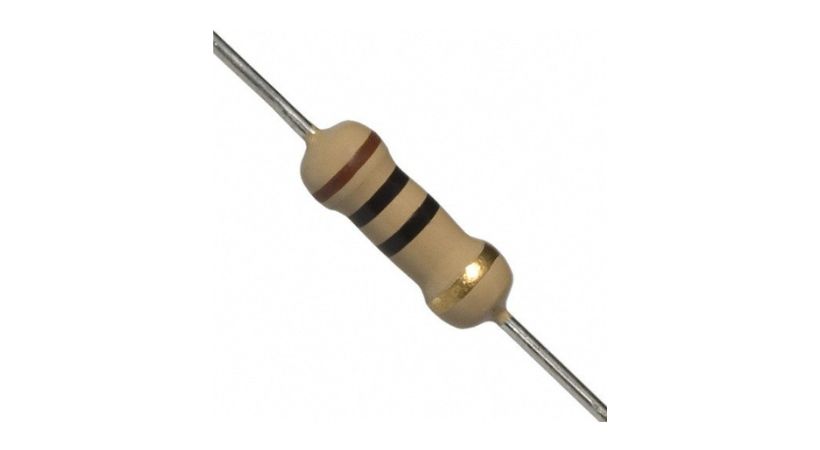
In whatever way you want to connect the terminal of the resistor, it will not affect its functionality. One end of the resistor is terminal one and the other end is terminal two.
One of the resistor types is the variable resistor, it has three terminals. The resistance of the variable resistor changes when we turn the knob.
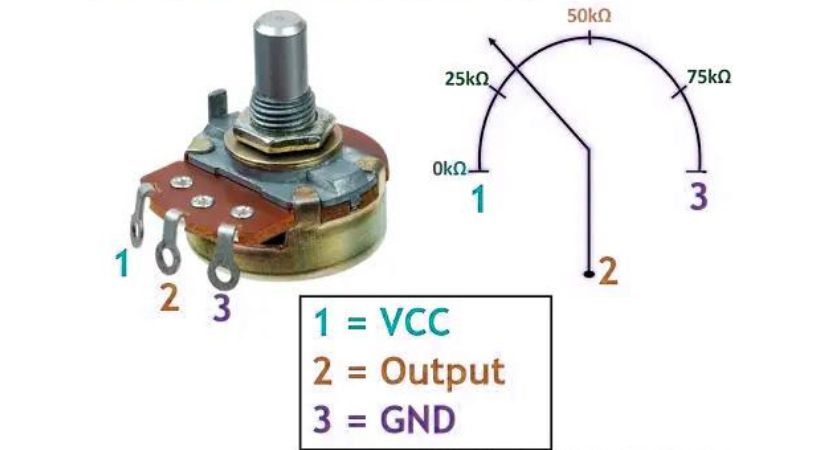
The first terminal is for power supply, the second one is for load and the third one is for ground connection. It should be connected according to its pin configuration.
2. Capacitor
The capacitor is an electronic component that stores energy. It can be either polarized or non-polarized.
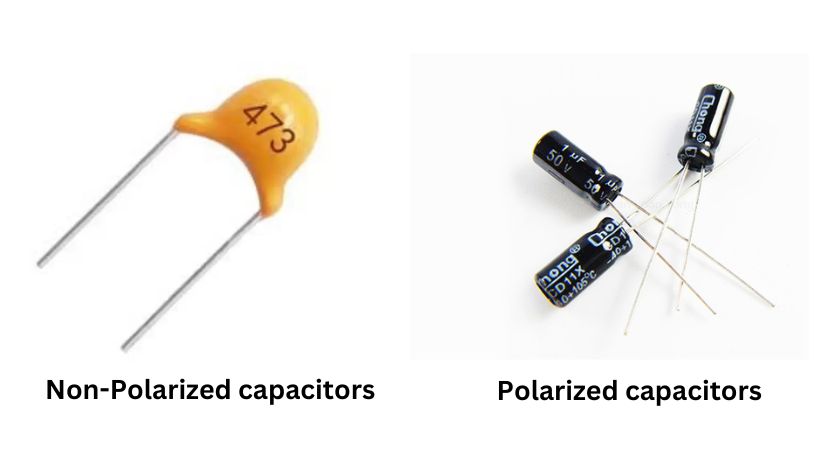
The pin configuration of the capacitor depends upon the type of the capacitor.
Non-polarized
It has two terminals and is non-polarized. The non-polarized capacitor means when you are connecting this type of capacitor you don’t need to worry about the positive or negative terminal.
It can be connected in any orientation.
Polarized
The polarized capacitor also has two terminals but the difference is that it has positive and negative terminals.
The polarized capacitor should be connected correctly means the positive of the battery should be connected to the positive terminal of the capacitor and the negative should be connected to the negative of the capacitor.
Polarized capacitor the positive terminal is marked with a “+” sign and the same negative terminal is marked with a “-” sign. Also, remember the longer lead is positive, and the shorter lead is negative.
3. Diode
A diode is a semiconductor device that allows current to flow in one direction only, acting as a one-way valve for electric current. It is a polarized component and has two terminals.
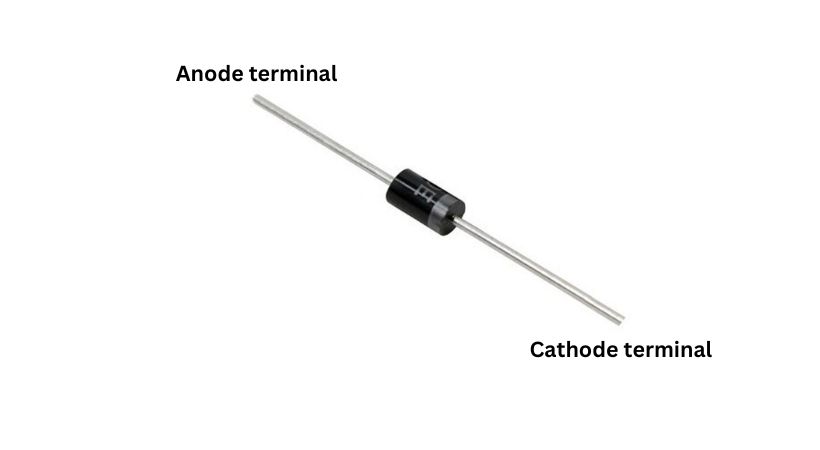
The terminals are called anode and cathode the positive terminal is the anode and the negative terminal is the cathode.
The positive of the battery should be connected to an anode and the negative should be connected to the cathode to operate the diode properly.
The diode has marks on it to identify the cathode and anode. Strips or bands at the end of the terminal indicate a cathode terminal.
4. Transistor
The transistor is a semiconductor device that is used for amplification and switching. They come in various types and configurations, each with specific pin arrangements.
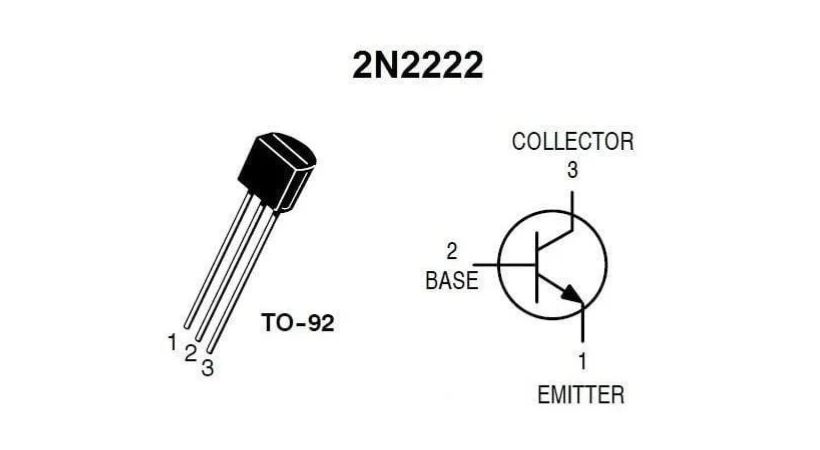
It is a three-terminal device and has two types: PNP and NPN. The terminals of the transistor are the emitter, collector, and base.
To identify the transistor’s pins, you have to turn the transistor, and the flat surface must face you. Now start from left, the first pin is the emitter, the second one is the base and the third one is the collector.
The power should be connected correctly to the properly operated transistor. The connection also depends upon the type of transistor.
The emitter is connected to the ground in NPN and the supply voltage in PNP. The collector is connected to the load in the circuit and can handle a higher current than the base.
5. LED
LED is the light-emitting diode, as the name suggests it emits light when connected to the power supply. It is a polarized component and it needs to be connected in the right way to work properly.
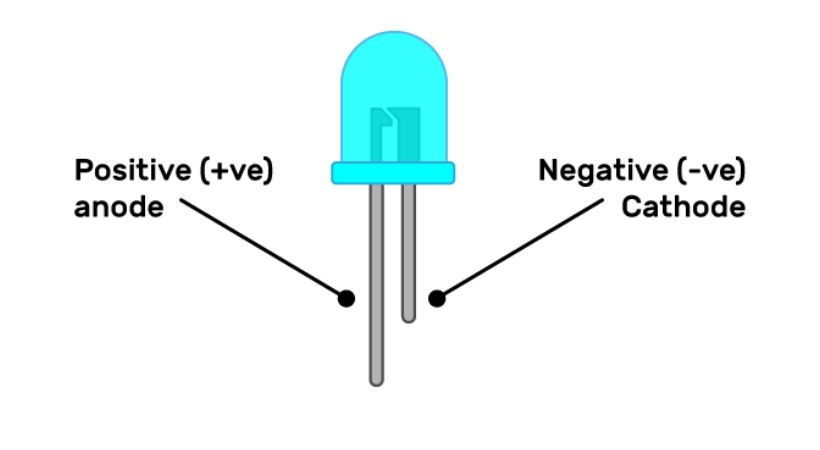
The LED has two terminals anode and cathode. The anode should be connected to the positive of the battery and the cathode to the negative of the battery.
You can identify the terminal by looking at the LED as the longer lead is the anode and the shorter lead is the cathode. The LEDs are used as indicators in various electronic circuits.
6. Integrated circuit
Integrated Circuits (ICs) are complex electronic components that contain multiple transistors, resistors, capacitors, and other elements all fabricated onto a single chip of semiconductor material, typically silicon.
Different types of ICs serve different purposes, and their pin configurations reflect their functionalities. An operational amplifier is also an integrated circuit and each pin serves special functions.
Here is an example of an operational amplifier LM741 pin configuration diagram.
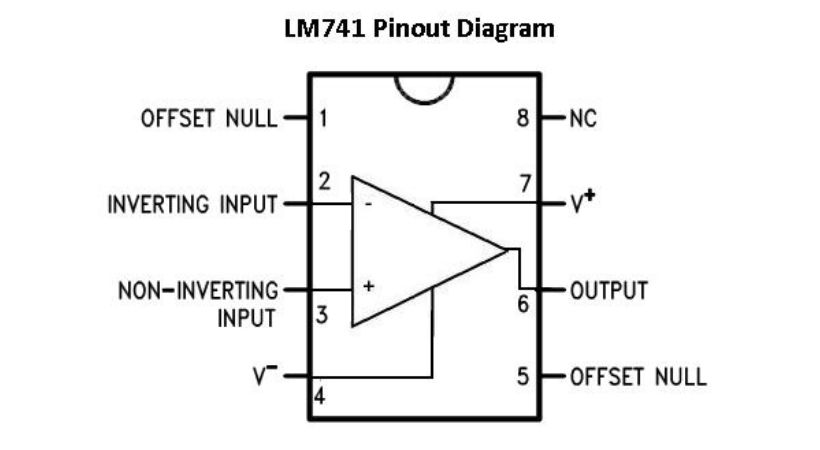
For operation amplifier to operate perfectly pin should be connected correctly. There are also different integrated circuits such as microcontrollers, timer ICs, and digital logic gates.
Understanding IC pin configurations is fundamental for anyone working with electronic circuits. Proper knowledge of how each pin functions and how to connect the IC in a circuit ensures successful implementation.
Conclusion
The right pin connection of the component in an electronic circuit is a crucial step to getting the intended response.
The pin of the components defines the specific functionality of the component and should be connected correctly.
If you beginner in electronics you should learn and understand the different electronic component pin configurations while working on any project.
The pin configuration learning helps in correcting connections, preventing damage to the components and circuit, and helping in identifying issues in the circuit.
The basic components like resistors, capacitors, diodes, transistors, integrated circuits, and LEDs and their pin configuration should be studied while connecting them.
Refer to datasheets and manufacturer specifications for accurate pin identification and correct circuit integration.
That’s it for electronic components pins configuration, I hope it will be helpful.
Thank you and stay blessed…
Other useful posts:
